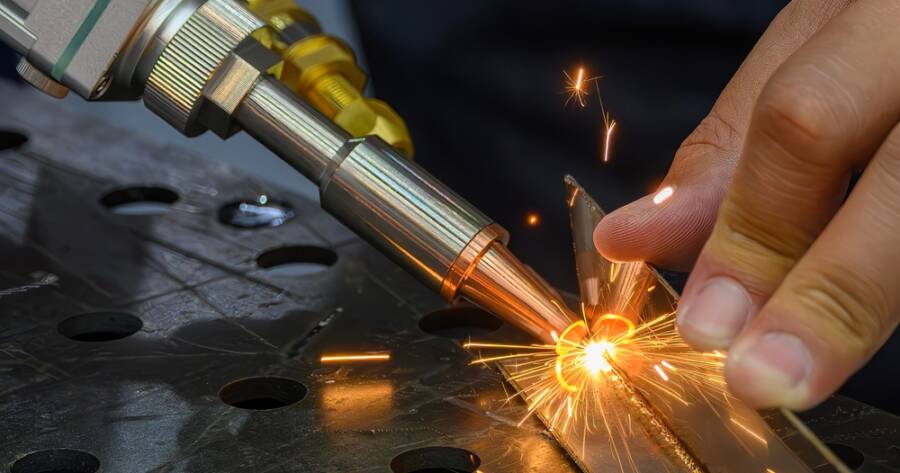In the world of precision manufacturing, the art of welding has transformed dramatically, thanks to advancements in technology. Laser welding machines are at the forefront of this evolution, revolutionizing how materials are joined with precision and efficiency. Learn about the world of modern laser welding by exploring its applications, advantages, and the ways it is reshaping the industry. For industries seeking enhanced accuracy and productivity, understanding these machines could be a game-changer.
Understanding Laser Welding Technology
Laser welding is a technique that employs focused laser beams to melt and join materials. The highly concentrated energy source allows for precise control over the welding process, resulting in accurate and consistent welds even on the most delicate of materials. Laser welding machines can manage both metals and some plastics, making them versatile for various applications.
A key advantage of laser welding is the ability to produce high-quality welds at exceptional speeds. This efficiency significantly reduces production time and costs, a factor that appeals to manufacturers engaged in high-volume production. Moreover, laser welding’s capability to join materials without filler metals enhances the purity and strength of the joints.
By focusing energy into a small spot, laser welding minimizes heat-affected zones compared to traditional methods. This means components experience less thermal distortion, preserving their integrity and dimensional accuracy—crucial benefits for industries like aerospace and electronics where precision is paramount.
Applications Across Industries
Various industries have embraced laser welding for its unmatched precision and efficiency, adapting the technology to fit specific needs:
- Automotive: In the automotive sector, laser welding is used extensively for producing components such as gears, transmissions, and even body panels. Its application ensures strong, lightweight joints, which is vital for enhancing vehicle performance and fuel efficiency.
- Aerospace: The aerospace industry benefits from laser welding’s capability to create consistently high-quality joints in metals like titanium and aluminum. This is essential for ensuring safety and performance in challenging environments.
- Electronics: Nestled within the electronics sector, laser welding plays a crucial role in assembling delicate components, such as sensors and battery contacts, without compromising integrity due to overheating or misalignment.
- Medical devices: In the medical field, laser welding provides the precision required to join intricate components of surgical instruments and implanted devices, ensuring functionality and patient safety.
By adapting laser welding technology, industries can achieve higher standards of precision and reliability, fostering advancements in both product design and functionality.
Advantages of Using Laser Welding Machines
The benefits of laser welding go beyond mere precision. Here are several reasons why industries are turning to this advanced technology:
- High speed and efficiency: Laser welding can achieve faster welding speeds than traditional methods, significantly increasing production rates without sacrificing quality. This efficiency is essential for high-volume manufacturing processes.
- Reduced thermal distortion: Compared to conventional welding, laser welding creates less heat, minimizing distortion and reducing post-processing work to correct defects.
- Complex geometry and accessibility: Laser welding’s precision makes it suitable for complex geometries and areas that are hard to reach with traditional tools. This versatility supports innovative designs and material use.
- Automation compatibility: Integration with automated systems enhances precision and repeatability, allowing for continuous production with minimal human intervention.
- Environmentally friendly: Laser welding typically consumes less energy and generates fewer emissions compared to traditional methods, supporting sustainability goals within manufacturing operations.
These advantages underscore why manufacturers across various sectors are increasingly adopting laser welding technology to fulfill both current and future production demands.
Considerations and Challenges
While laser welding offers numerous benefits, there are also considerations and challenges firms should weigh:
- Initial investment and cost: High initial costs for purchasing and setting up laser welding systems can be a barrier, especially for small-scale operations. Evaluating the long-term return on investment is crucial.
- Maintenance and technical expertise: Laser welding equipment requires regular maintenance and a certain level of technical expertise to ensure optimal performance, potentially posing challenges for facilities without existing skills or infrastructure.
- Material limitations: Not all materials are compatible with laser welding; hence, companies must evaluate material compatibility to prevent welding defects or inefficiencies.
Organizations considering these systems should conduct thorough assessments, factoring in both the benefits and potential hurdles to determine if laser welding is aligned with their manufacturing objectives.
Embracing the Future of Welding
The advent of laser welding machines marks a significant step forward in the domain of precision manufacturing. Embracing this technology can offer businesses the opportunity to enhance product quality, increase manufacturing speed, and streamline processes in ways traditional welding methods cannot.
For industries seeking to thrive within the fast-paced environment of modern manufacturing, laser welding presents a versatile tool with benefits that could be transformative. However, its full potential relies on thoughtful implementation and strategic integration within existing operations.
Understanding the intricacies and potential of laser welding could empower enterprises to remain at the cutting edge, propelling innovation while delivering unparalleled precision and performance. As the technology continues to evolve, staying informed and adaptable can ensure that businesses are well-positioned to capitalize on this revolutionary advancement.





